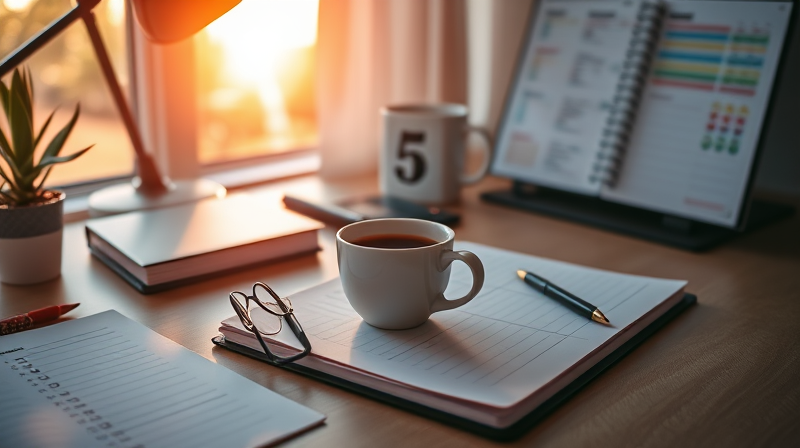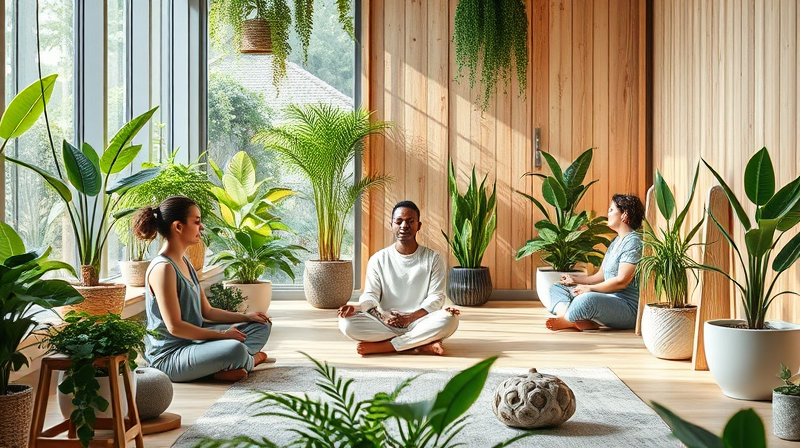In our fast-paced modern lives, finding moments of calm can seem like a challenge. However, relaxation techniques can be your first step toward a more serene and centered existence. This guide is designed to encourage you to explore various methods for reducing stress and bolstering your emotional resilience.
Relaxation is not only about escaping life’s pressures, but also about reconnecting with your inner peace. By developing an awareness of your body, thoughts, and surroundings, you empower yourself to manage anxiety, improve mental clarity, and attain a steady sense of wellbeing.
Practical Techniques to Embrace Today
For many beginners, the idea of relaxation might feel daunting. Yet, several simple exercises can jumpstart your journey toward a healthier mental state. Adopting any of these practices regularly can help you build a toolkit of coping skills that support you in times of stress.
One of the most accessible methods is breathing exercises. These exercises help you to focus on your breath, anchoring your mind and reducing the impact of stress.
For instance, consider practicing Box Breathing. This structured method involves inhaling, holding, exhaling, and holding the breath again for equal counts. Here are some basic steps to follow:
- Inhale for 4 counts
- Hold your breath for 4 counts
- Exhale for 4 counts
- Hold again for 4 counts
Repeating this sequence a few times can significantly lessen feelings of tension and anxiety.
Another powerful tool is Progressive Muscle Relaxation (PMR), which encourages you to understand the connection between tension and relaxation. PMR involves tensing different muscle groups for a few seconds and then releasing the tension. This not only helps in reducing physical stress but also enables you to recognize and release mental strain.
Adopting this practice step-by-step can transform your awareness of how stress manifests physically in the body, making it easier to manage stress before it overwhelms you.
The 5-4-3-2-1 Grounding Technique is another effective exercise that anchors you in the present. It directs your attention to what you see, touch, hear, smell, and taste, thereby reducing overwhelming emotions and distracting worries. This mindfulness approach is particularly useful when you're feeling anxious or disconnected.
Besides these basic practices, engaging in guided imagery or visualization can be deeply transformative. In this method, you allow yourself to mentally visit a place of calm—a quiet beach, serene forest, or any peaceful environment. By involving all your senses in this exercise, you create an inner sanctuary, away from everyday stressors.
The process usually involves finding a quiet space, closing your eyes, and slowly immersing yourself in a detailed mental image that appeals to you. This practice is an elegant reminder that inner peace is a state of mind that can be accessed anytime, anywhere.
For movement-based calm, consider practices such as Yoga, Tai Chi, or Rhythmic Exercise. These activities unite breath, body movement, and mindfulness. Movement helps you channel any surplus energy and encourages a holistic approach to managing stress.
Yoga Nidra, also known as yogic sleep, is another fascinating technique. It combines guided meditation with deep relaxation to help you enter a state of consciousness between sleep and wakefulness. You simply lie down, listen to a guiding voice or track, and allow your body to unwrap layer by layer from daily tension.
Daily integration is key to truly benefitting from these techniques. Start small; even a five-minute session of meditation or deep breathing can set the stage for a calmer, more focused mind. Incremental steps can lead to significant changes over time.
Additionally, incorporating affirmations and a body scan into your routine are powerful methods to reinforce your commitment to relaxation. Reciting positive statements like, ‘I am calm and capable’ during stressful moments can gradually help redirect negative thoughts. Similarly, a body scan exercise allows you to feel every physical sensation and consciously release tension.
Here is a brief summary of some highly effective practices:
- Breathing Exercises: Box breathing, mindful deep breathing
- Muscle Relaxation: Progressive Muscle Relaxation
- Mindfulness: 5-4-3-2-1 Grounding Technique
- Mental Imagery: Guided visualization exercises
- Movement-Based Practices: Yoga, Tai Chi, rhythmic exercise
Remember that developing a regular practice of relaxation and coping skills takes time. Experiment with different techniques until you find those that resonate best with you. Over time, these practices can lead to profound changes in your mental, emotional, and even physical well-being.
Relaxation is a journey, not merely an escape. By dedicating even a few minutes daily to practices of mindfulness and calm, you equip yourself with the resilience required to navigate life’s challenges with grace and strength.
Embrace the journey of relaxation as an essential part of your daily routine and let these methods guide you toward a healthier, more balanced life. Each moment spent in calm is an investment in your future, nurturing your ability to manage stress and create a positive inner environment.
Keep moving forward with the understanding that every small effort matters. With time, these practices will help you develop a more profound sense of awareness and lead you to a more joyful and peaceful existence.








